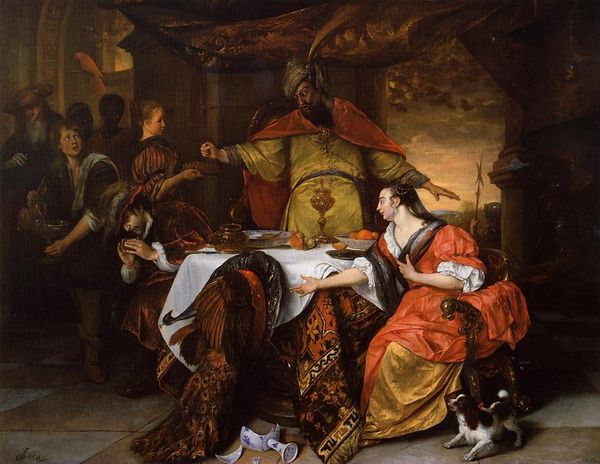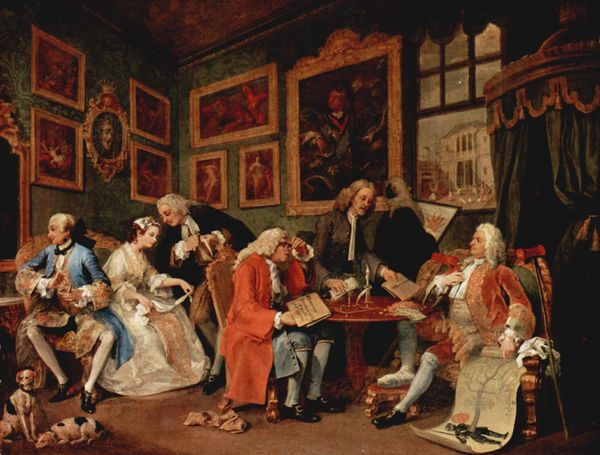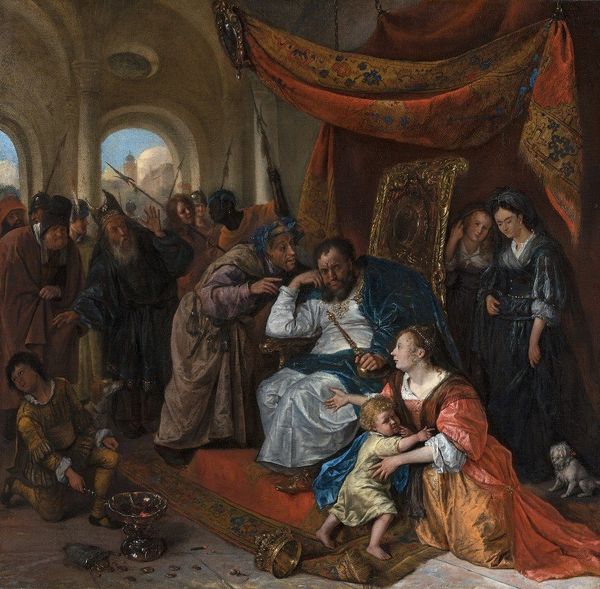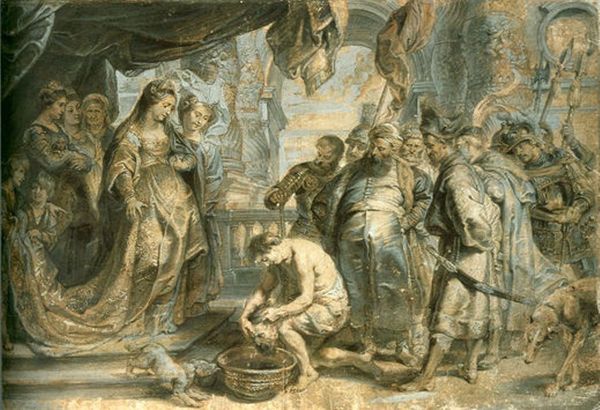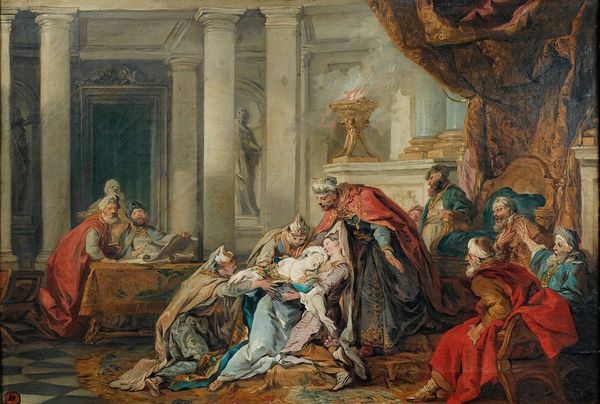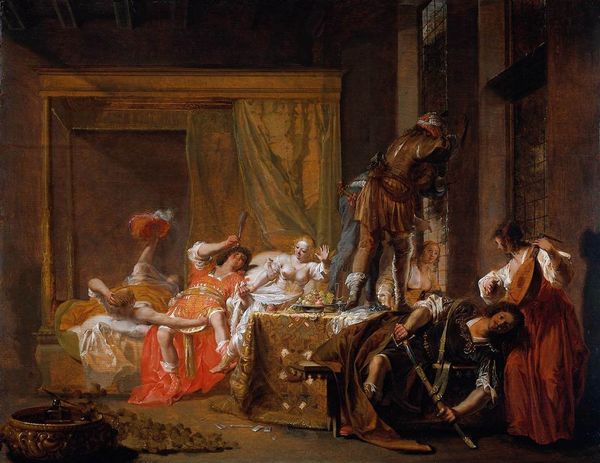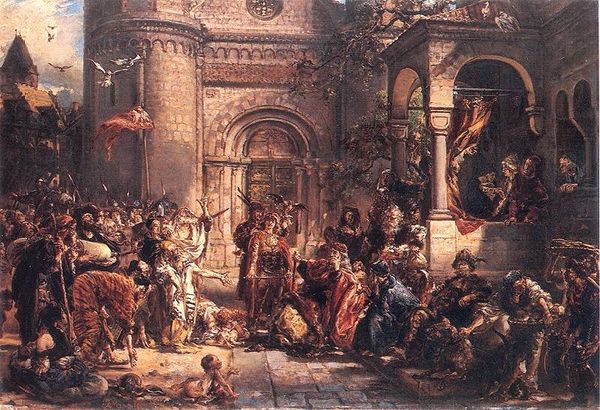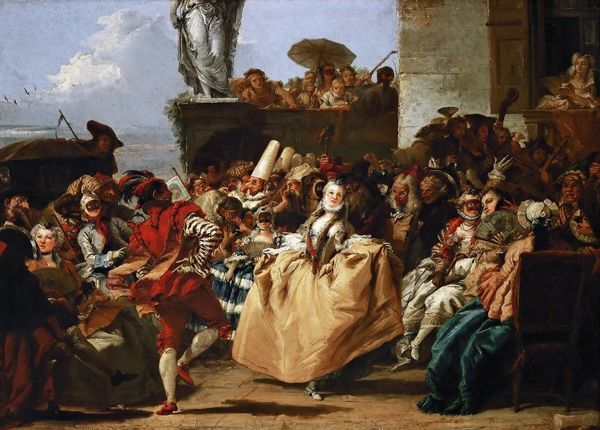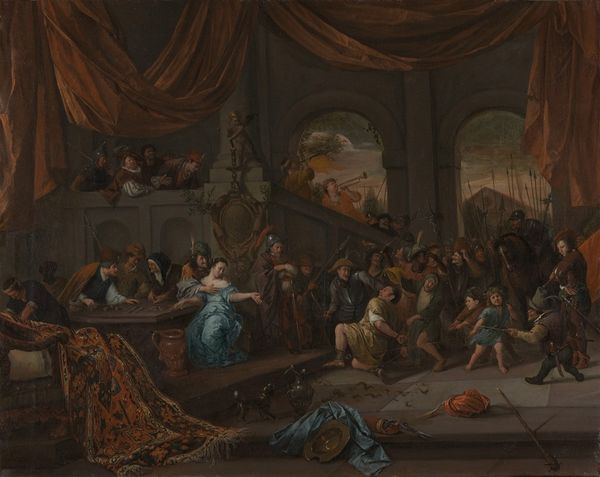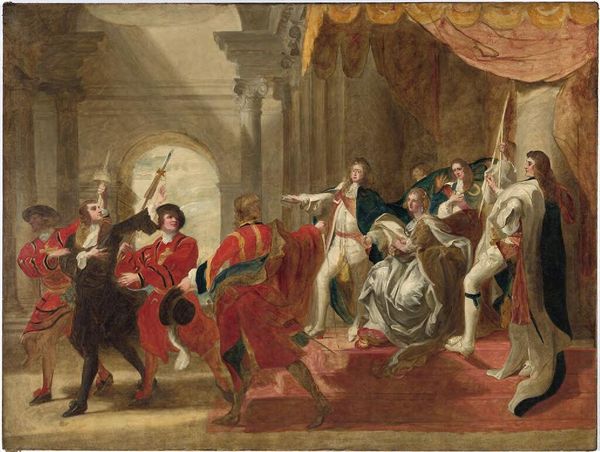
painting, oil-paint
#
narrative-art
#
baroque
#
dutch-golden-age
#
painting
#
oil-paint
#
figuration
#
christianity
#
history-painting
Dimensions: 199 x 134 cm
Copyright: Public domain
Curator: Good morning. We're here to discuss Jan Steen's "Samson and Delilah," painted around 1670. It’s part of the Wallraf-Richartz Museum collection in Cologne, a fine example of Dutch Golden Age painting depicting a dramatic scene from the Bible. Editor: Immediately striking is the chaotic energy, even oppressive. There's a dense crowd of figures and fabrics; you can almost feel the textures of that opulent rug beneath Samson's feet—and that tension is magnified by the way oil paints give the entire scene a tangible weight. Curator: It’s certainly designed to be impactful. Steen places Samson front and center, humbled and bound. This moment—the loss of his strength through Delilah’s betrayal—resonated strongly within a Dutch Protestant context of the time, illustrating moral failure, and foreign corruption. Editor: Indeed, I see those coins Delilah is holding and they seem to embody greed; currency takes center stage—highlighting economic motivations influencing faith and the manipulation that accompanied religious struggles. How often are stories about exploitation more practically material? Curator: Precisely. This piece reveals more about how wealth reshaped religious and social dynamics than about biblical exactitude. Also note how the setting isn’t some faraway, romanticized past. Steen grounds the Biblical narrative into something resembling contemporary, mercantile life within the Dutch Republic. It encourages self-reflection in the Dutch citizenry of the 17th Century. Editor: I wonder, given all that intent, did his patrons focus on these lessons or were they drawn in, also, to the theatrics, or even how lavishly textures were displayed--and by whom exactly were these commissioned paintings intended for consumption within that setting and marketplace for displaying and discussing faith? Curator: Patrons were often drawn to moral lessons cloaked in captivating stories, yes, however the work served the function of reinforcing societal values for a largely middle class audience who viewed piety and thrift in religious terms. This painting becomes a status marker. Editor: This reminds us how crucial material production, its cultural consumption and financial power during the Dutch Golden Age went beyond artistic skill; and it created new socio-economic avenues as well. Curator: Absolutely. It’s the complex interplay between art, faith, and economic realities.
Comments
No comments
Be the first to comment and join the conversation on the ultimate creative platform.
